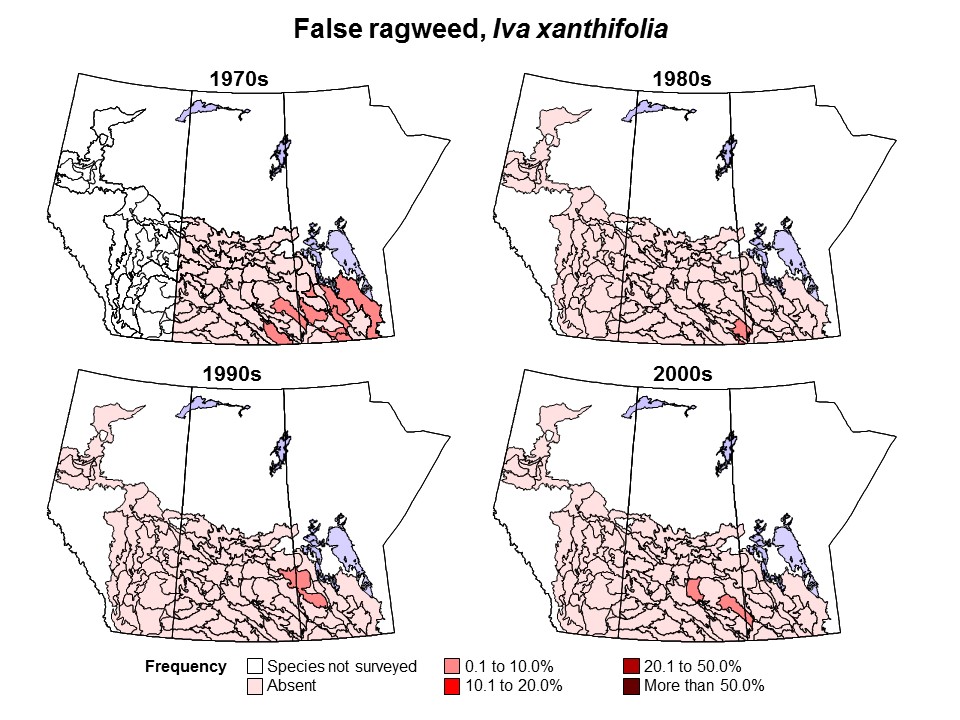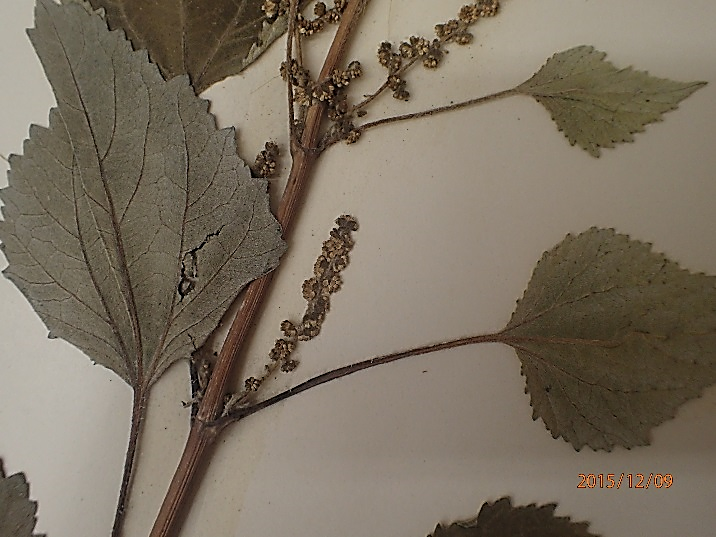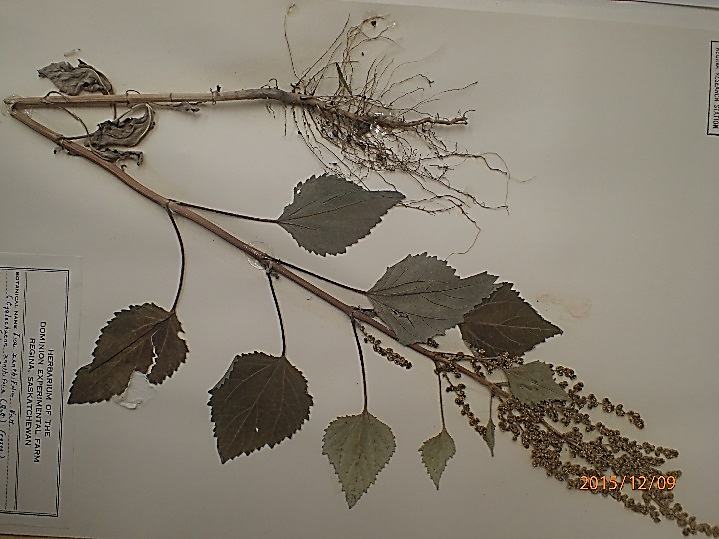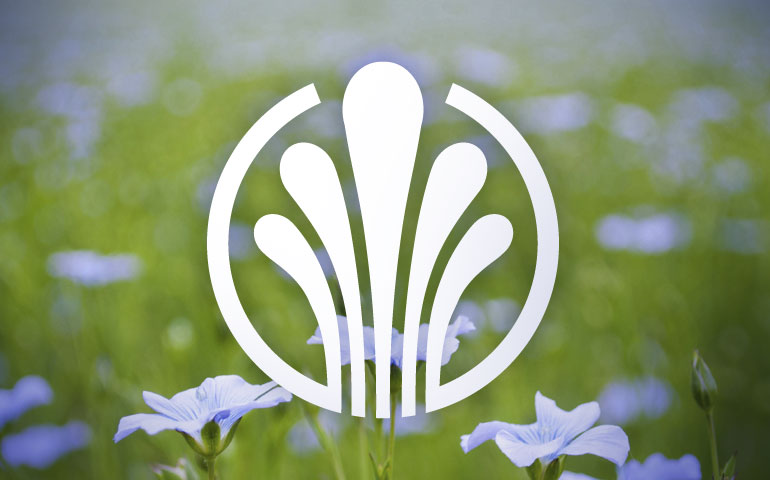
False Ragweed Causes Rejected Flax Shipment
Background
In December 2015, a container shipment of flax was rejected from China upon receiving the phytosanitary certificate documenting the presence of false ragweed seeds. The Flax Council of Canada would like to advise Canadian flax growers that false ragweed can be issue for certain export markets, and to be on the lookout for false ragweed.
False ragweed (Iva Xanthifolia Nutt.), also known as marsh elder, is in the Composite (Aster) family. It can grow to approximately 1.5 m to 2 m tall. Native to Canada, false ragweed can be found in agricultural land, newly disturbed areas and ditches. In AAFC weed surveys over the last 30 years (Fig.1), false ragweed plants have been found generally along the Manitoba – Saskatchewan border, and more recently in south central/ south eastern part of Saskatchewan.
Figure 1. False ragweed prevalence in the Canadian Prairies (1970 – 2000s)
Plant Identification
Juvenile – Stems are smooth, slightly woody, branched and erect. Lower leaves are often three-lobed whereas the upper leaves are broad, almost heart-shaped, with coarse irregular-toothed margins. Leaves are covered with hairs on both surfaces. False ragweed looks similar to sunflower as a juvenile plant.
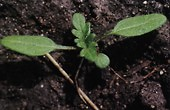
Figure 2. False ragweed seedling
Mature – Mature plants can reach 1.5 to 2 m tall. Small, greenish white flowers in branching clusters at the top of the plant.
Figures 3. and 4. False ragweed plants (Photo: Julia Leeson, AAFC)
Figure 5. Flax seed (Left) comparison to false ragweed seeds (Right) (Photo: Julia Leeson, AAFC)
Control Tips
Pre-emergent glyphosate application at planting is the most common control method. However, false ragweed is a warm season plant, so a cool spring may delay germination making this practice ineffective. Post-emergent weed control options in flax may include products that contain MCPA such as: Curtail M, MCPA amine 500, MCPA ester 600, and Buctril M.
Consult your local Guide to Crop Protection for rates and application information.
Sources:
Clark Brenzil, Provincial Specialist – Weed Control, Saskatchewan Ministry of Agriculture. Personal Communication – December 11, 2015.
Julia Lesson, Weed Monitoring Biologist, AAFC. Personal Communication – December 9, 2015
Leeson, J. Y., A. G. Thomas, L. M. Hall, C. A. Brenzil, T. Andrews, K. R. Brown and R.C. Van Acker. 2005. Prairie weed surveys of cereal, oilseed and pulse crops from the 1970s to the 2000s. Weed Survey Series Publ. 05-1, Agriculture and Agri-Food Canada, Saskatoon Research Centre, Saskatoon, SK.
National Sunflower Association of Canada. Sunflower Production Guide – Weeds. Available Online: http://www.canadasunflower.com/pdf/Weeds.pdf
Pesticide Management Regulatory Agency, Health Canada, Pesticide Label Search: False Ragweed. Available Online: http://pr-rp.hc-sc.gc.ca/ls-re/index-eng.php

